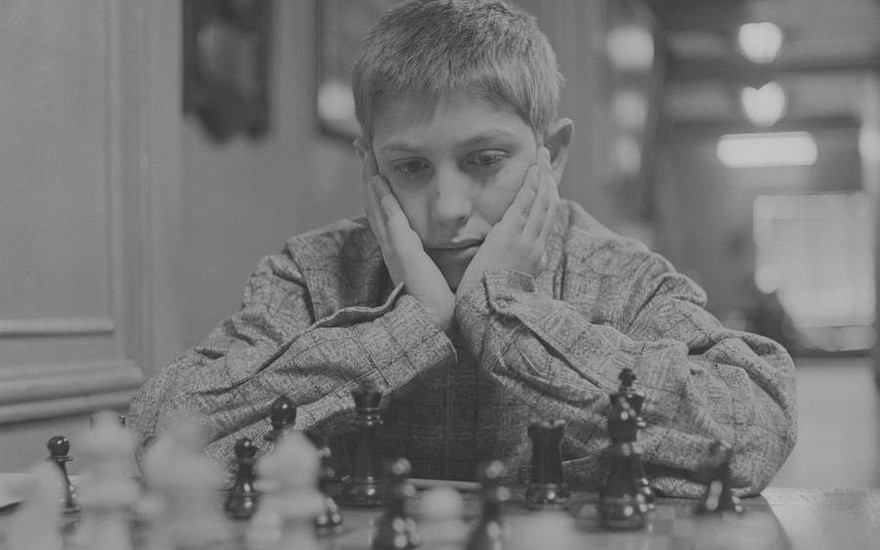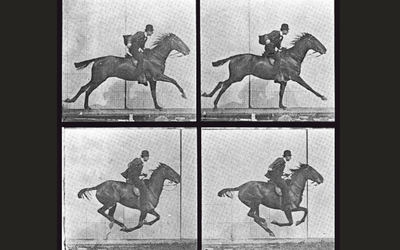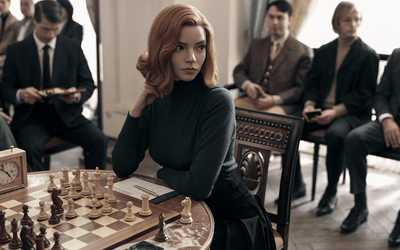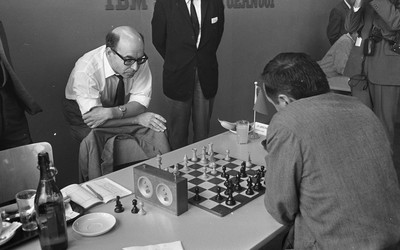
Bettmann
My Ultimate Guide to Chess960
In-Depth Guide about History, Strategies & Opening Tips, Resources for Chess960 and more
Table of Contents
- A bit of History
- Basic Question: Why do I love Chess960? (Reasons to play)
- Strategies, Opening Tips (The Vision Technique etc.)
- Further Resources on Chess960 (Links & Studies)
Yes, this will be a loooong post with tons of material, so be prepared :) Because this will be the one and only blog post that i plan write about Chess960 and is not meant to be digested in one go, so take your time. I'll also update this post from time to time.
(Also don't forget to join the official Lichess 960 Team meanwhile :) )
A bit of History of Chess960
I'll keep this section as short as possible. Most of my knowledge on this topic is based primarily on "Shall we play Fischerrandom Chess" by Svetozar Gligoric, first published in 2002. I can highly recommend this book, especially if you want to learn more about the behind the scenes of how Chess960 was developed, -more precisely- formulated by Bobby Fischer. Going through the book, you will also find out more about the history of chess itself, the steps it has taken throughout the centuries, evolving or undergoing major chances together with humanity, till the world premiere of Fischerrandom Chess as an exhibition match between Peter Leko and Michael Adams in Mainz 2001.
One of the most remarkable points in the books were references to earlier versions of Chess960 as some kind of "Shuffle Chess" dating back to the end of 18th century. It is interesting to hear that even back then people experimented with different kind of starting positions and for example the idea of shuffling back rank pieces in some form has already been suggested in 1792 by Zuylen van Nieveld. Here is an example game played in Baden Baden in 1851 from the book:
https://lichess.org/study/rnyqBgqt/Xnmo45y8
In the book it is even claimed that the idea of shuffling of back rank is as old as the game of chess itself, as the early versions of chess in India had an asymmetrical starting position with blacks king-queen swapped (Kd8-Qe8), while in Persia whites king and queen switched places at the start. Full symmetry as we have today came later.
Reading about the history of development of chess and its variants, no matter what variant or idea were suggested, one thing seems to be clearly common to me: in almost every era, there were people who felt the need to reform the game due to various reasons or experiment with different versions as well as there were people who quite enjoyed the status quo. One sort of reason for such changes was the concern about drawing problem in chess, especially after the Capablanca-Alekhine World Championship Match when it reached 73.5% draw rate. Even Capablance himself sought ways to spice things up and suggested few additions like increasing board size to 10x10 or 16x12 or adding fairy/hybrid pieces (like bishop+knight):

Throughout the last century, all sorts of attempts for variants and modification suggestions were made, including the Bronstein Chess which i wrote about previously, but they all suffered from a common issue that prevented them to gain popularity and eventually to take over the standard chess:
Their mistake was to drift too far from the classical game... The most remarkable feature of orthodox chess is probably the admirable balance between the chessboard and the number, variety and power of pieces, which offers a sufficient degree of complexity and inexhaustible research, ... (P. 74, Gligoric, 2002)
Whole premise of the Chess960 or Fischerrandom is based on a minimal change applied to the classical game just enough to spice things up, yet preserve the ideal balance between the elements mentioned above in the quote as much as possible. Chess960 aims to expand the complexity of the classical chess game in a healthy way by keeping the chess elements as they are (such as the board size, or without introducing new pieces with funky movements) and enables us to experience the vast potential of chess pieces and geometry of the board in a whole new and wider dimension. In some sort of sense, it brings a minimalistic approach to the game, as all you need to take with you is your understanding of chess and tactics without having to carry the all the heavy theories of memorised openings on your back.
In the next chapter, i'd like to talk about this experience, in particular how I experience the game of Chess960. What do I find in it that excites me and makes me become hooked on?
Why do I love Chess960?
Chess960 does not only eliminate the memorised opening theory, but also brings its own unique positions from which lots of unusual ideas and patterns come into existence. It encourages you to have an open mindset and be alert right from the start, so that you can deal with unexpected tactics that are unique to the certain starting positions. Many of the starting positions bear their its own unique challenges and problem-set to be solved by the players. For example, in each position, right from the start, you have to identify potential problem pieces, come up with a solution for a development, which utilises your pieces optimally. Opening stage becomes a riddle to be solved, you have to work on your own to create maximum harmony with your pieces, while in standard chess you already start with a perfect harmony, which is often taken for granted and as a result, first 10-15 moves are banged out in auto-pilot, especially in online chess in fast time controls. However in Chess960, there is not much room for auto-pilot and it forces you to think on your own, as if the game starts from a middle-game position. As someone who likes problem-solving and overcoming challenges by means of thinking outside of the box and on your own, this is the core experience that i love perhaps most about the game of Chess960.

In its essence, Chess960 is just chess, all the wisdom accumulated for centuries and the principles discovered are still relevant. Endgame is endgame, smothered mate still occurs with a knight on 7th rank, doubled pawns are still undesired most of the time, the principles of opening phase about fighting for the centre still hold true. But instead of applying them blindly, you need to question the spirit of the position and actively decide which principle takes precedence in a given position. That's the fun part if you enjoy challenges.
Lets dive into some concrete examples that should demonstrate certain aspects such as originality in both tactical and positional concepts, revaluation of values, the necessity of alertness for early tactics and so on. Basically a collection of positions that have fascinated me in this or that way.
The first position i'd like to share is the following position, where some tactical sequence has lead to this original picturesque position. How many times have you seeing a knight dominating on 8th rank dominating a bishop in the centre of the board on move 7th like this?
The notion and nature of king safety in Chess960 are in whole different level. A king might be astonishingly safe in the middle of the board like this, leading its army like a true leader :)
or the specific dynamics and placement of the pieces could give you enough courage to make fearless and counter-intuitive moves like g5 in the following position, as a weakness is only a real weakness when it can be exploited. Here white has neither time nor forces to punish:
or you might find yourself castling into open files, a decision that might appear counter-intuitive first yet solve all your problems at once:
or you can come up with creative ways to bring your pieces into game:
another creative route for the rook:
In Chess960, you need to be alert for everything right from the start. You cannot play openings on auto-pilot, seemingly innocent or natural moves might turn out to be a tactical blunder or lead to a long-term positional disaster.
Here is the Chess960 version of so-called Fools Mate motif, as Nxf4 relies on the idea of gxf4 Bxh1 Rxh1 and Qh4#:
Here is an another example of unexpected early tactic, as white was probably thinking that the knight was pinned by the bishop, however the bishop itself becomes a target after Ng4!
(Note: Special big thanks to GM @RealDavidNavara and GM @Former_Player for their contributions and game additions to the study called "960 Brilliancies Project"! In the study, you will also find some games annotated by the top GM @RealDavidNavara himself!)
In the following position, white has identified a weakness in the light-squares on blacks queenside and gone straight for it:
The curation of positions could be extended endlessly. So i'd like to wrap up this section by showing two more wild games:
This one is a surreal game between GM spicycaterpillar (Ray Robson) and catask. When going through the moves in the game for the first time, you might be thinking, what the hell is this game and what variant is this? Second time, you will realise this is just a chess, yet a super dynamic one, where both sides fighting for initiative by tactical and positional means.
First black starts with a passive sacrifice of a rook on move 5 for initiative:
then proceeds to sacrifice a queen for two pieces on move 14:
Feel free to play through the game at your own pace.
Of course not all games in Chess960 are that crazy, there are lots of games with positional grinding and strategic executions. But i'll go more into details of strategic aspects in the next chapter. To end this chapter, i'd like to share this sharp game, which highlights the importance of piece coordination and activity in the development:
by tactical means black has succeeded to utilise its pieces optimally, followed by a well organised attack against white king, while white never get a chance to coordinate its pieces, e.g. light-square bishop or rooks and eventually collapsed:
So let's say, maybe your appetite has already increased after seeing those examples, or you have been already passionate about the game, but have been asking yourself sometimes about the ways you could improve here and there? How to study for Chess960? Doesn't the idea of studying chess or openings contradict the main idea behind Chess960 after? etc. Well, not exactly. In the next chapter, i'll talk about useful things you can do for your Chess960 game, as well as techniques i use myself, during the game or to train etc.
Strategy
General Tips
First of all, Chess960 in its essence just chess. Strong standard chess players are likely to be strong in Chess960 to start with. That's why you will see GMs, playing a Chess960 game for the first time, being still very strong. Their chess knowledge, endgame theory, tactical patterns, motifs, intuition and more transfers to Chess960 massively as well. You will also notice that often in games between two strong players, the middle-games tend to look like a typical middle-game position from standard chess.
Notice how the middle-game position from the Fischer Random Championship Final in 2019 between GM Wesley So and Magnus Carlsen look like a typical 1.d4 d5 2.c4 game with a typical pawn structure:
and yet just a few move laters, board was full on fire:
So with other words, first no-brainer rule of getting better in Chess960 is getting better in standard chess and have strong understanding of fundamentals. It may come as a surprise to hear, but if you study standard chess openings in an efficient way, such as trying to understand what a certain opening setup tries to achieve as a goal, which problems does it try to solve as well as which questions does it pose to the opponent etc. instead of memorising moves, it will immensely be helpful also in Chess960. Especially studying and understanding typical pawn structures is essential, e.g. how to play with/against isolated (queen) pawn, because the formation in a Chess960 game might manifest itself slightly in different shape but the fundamental strategic ideas and plans will be basically same.
Second thing you can do for a rapid improvement in Chess960 is dedicating significant part of your training sessions to tactical training. Chess960 games are very very often decided in a tactical battle, so if you have very little time for training but want to get highly efficient results, this probably should be your priority. It is currently also the only thing i do for my chess (also to not to forget how pieces move) as i have limited time for it. Do tons of puzzle storms, puzzle streaks, puzzle racers or maybe simply untimed puzzles etc etc. whenever and wherever you can. Endless options on the internet, choice is yours.
Last general tip i'd like to suggest for rapid improvement is annotating your games in a study with as little help as possible from Stockfish. Try to be as verbal as you can when you are commentating on your own games. It is even better if you can comment about your thoughts and calculations you had during the game, so you can examine your decision-making process and thought-habits much better. You'll then discover your ineffective habits. For that purpose games with slower time control work best, minimum 3+2 or higher. This was basically all i did during Fischer Random World Championship in 2019 and from that material i've build this website: https://nine-sixty.netlify.app/ To improve your verbal commentary, you can simply read books annotated by the past World Champions themselves. (e.g. Alexander Alekhine's Best games by Alekhine) This might sound like a little bit effort, but it is very worth it and effective.
The Visioning Technique
Now let's talk about the concrete tips a little bit. Unique and the main challenge of Chess960 is coming out from the opening phase with as minimum problems as possible. To cope with that there is a visioning technique i often use and it has helped me a lot so far. The method is basically about, before your very first move, trying to come up with a vision about how an ideal opening setup should look like if you had time for all the moves in the world. For that purpose i usually draw arrows on the board. So the result of this practice might look something like this:
or
The order for drawing arrows starts usually with the more obvious moves, for example, moves that open bishops diagonals or queens. (b3 when bishop is on a1 etc.) I then circle undefended pawns for both sides. Also pawn moves that open room for multiple pieces (ideally 3) are great first move candidates. (e.g. f4 when Bg1-Rf1-Qe1 etc.) I work in a top-down choice fashion, meaning that i first draw the moves with less options and leave the ambiguous pieces for later. This process is a little bit like solving a Sudoku puzzle. I try to make few notes about which side i'm likely to castle, if at all and also try to identify the most problematic piece to develop. For example this can be a bishop on e1 etc. So i usually leave it for later to solve, depending on how the game develops. Also i pay special attention to the queen development, as it is often neglected in Chess960, but requires more attention than standard games, because it can easily get stuck in the corner etc.
This initial process, which should take only few seconds and done intuitively, already gives me a first impression about the challenges of the position, upon which i build my plans. Basically, since i become familiar with the weakness in the position, i try to quickly target those weaknesses in the enemy camp, as it will have the same starting position. From then on, the game becomes a battle about who will be able to assert oneself to reach their ideal opening position or exploit those weaknesses by tactical and strategical means. The main idea is, it is not about reaching the position you visioned before the the first move completely, but rather taking that vision as a guide and a goal to strive for which then naturally drives you in your strategic considerations.
After playing certain amount of Chess960, you'll develop a natural feeling and start to recognise reoccurring ideas and motifs. To explain what i exactly mean by that, let me show you couple diagrams involving a theme of shutting bishops in the corner:
Once you witness or discover more typical themes like this, you'll notice them in your games more easily and be able to apply them yourself. Ideally, one could do a study with such reoccurring themes that one has encountered several times. One can benefit a lot from a theme-oriented approach of collecting ideas.
All these tips and insights i've shared is not enough to scratch even the surface of Chess960. After all, study of Chess960 is not that different than studying chess and even hundreds of books might not be able to cover all the strategic and tactical aspects of the game. In the next section, i'll try to share few useful resources and links related to Chess960.
Further Resources
Links
- Detailed Guide to Chess960, where i annotated my games from Fischer Random World Championship 2019 as well as formulated some principles and ideas for opening development: https://nine-sixty.netlify.app/
- An inspiring blog by HarryO dedicated to Chess960, with regular posts from 2011 to 2019: http://chess960jungle.blogspot.com/2011/05/chess960-naming-knight-pairs.html This was one of the earliest materials about Chess960 i've ever encountered and has also inspired me to create my own blog
- Another blog by Mark Weeks is also a recommended source, covering news and events as well.
- Table of all 960 starting positions (PDF)
- Fischer Random World Championship 2019
Studies
- 960 Brilliancies Project
- Analysis of Starting Positions
- Annotated Games of Biel 2020 Tournament
- Game Collection by Tasshaq
- Original Tactics
Also feel free to check this Crazyhouse960 study, if you are into variants:
Thanks everyone for reading, hope you guys have found it inspirational or somewhat insightful. Stay in peace.
More blog posts by visualdennis

How does the knight move?
Visual guide to the power of knights ️
Queen’s Gambit (TV Series) and why we love chess (Spoiler alert)
On the Queen's Gambit (TV Series) and why we love chess
Bronstein Chess
Exploring the gems on Pychess - Mini Series about Variants Part 1